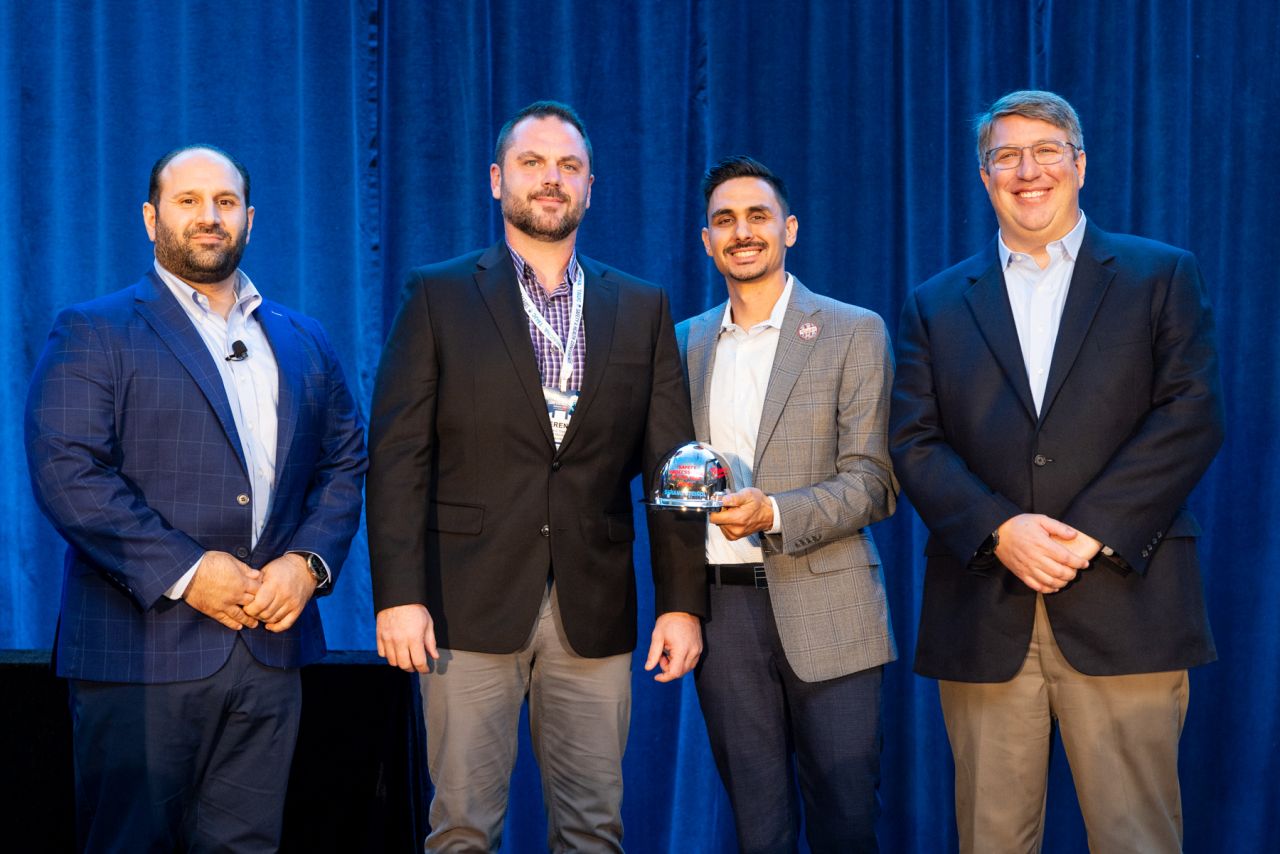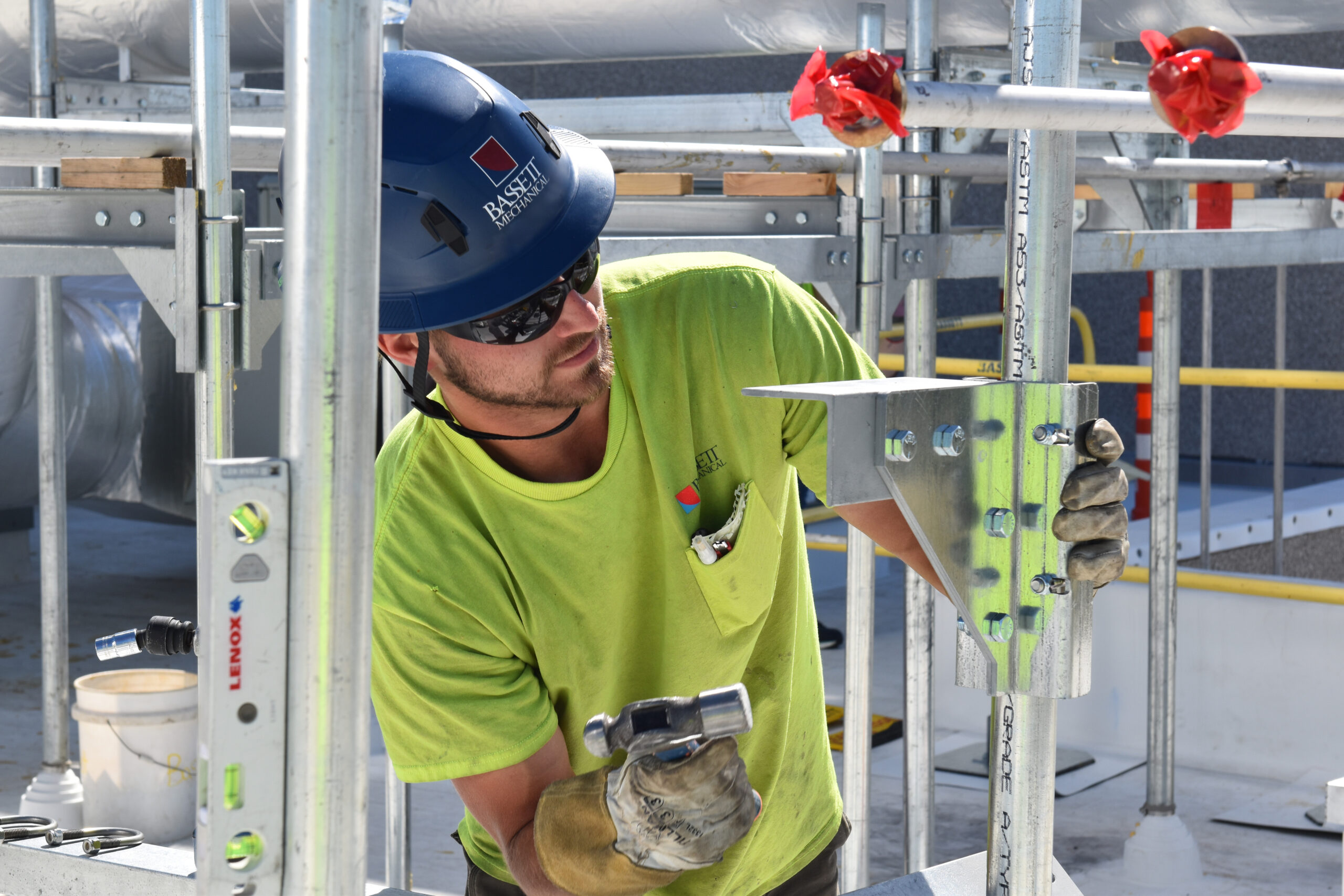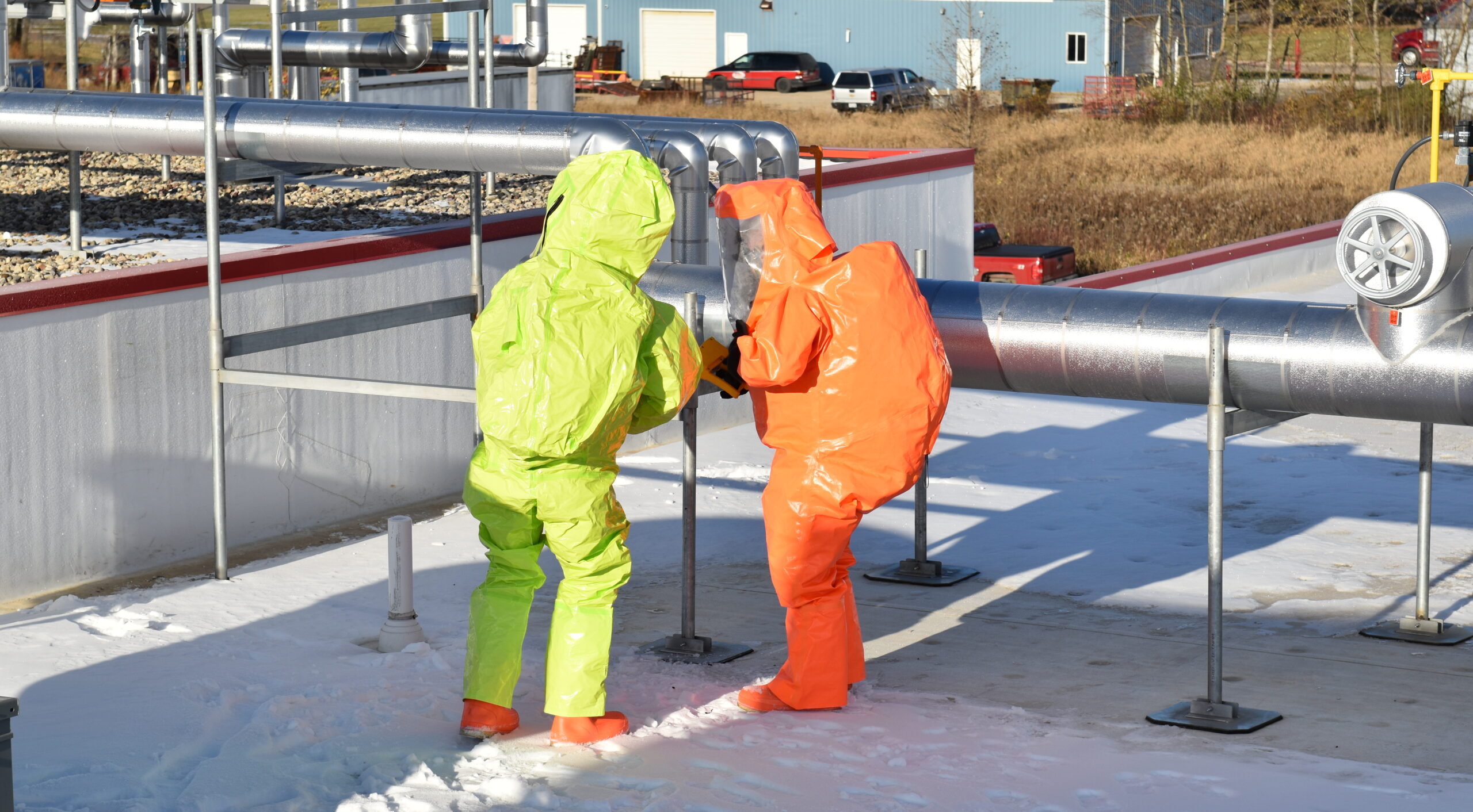WHAT IS A BEHAVIOR-BASED SAFETY (BBS) PROGRAM?
Behavior-based safety is a process that creates a safety partnership among all levels of an organization, with attention on daily behaviors and actions. It applies the science of behavior change to real workplace situations.
At Bassett Mechanical, behavior-based safety focuses on what people do, analyzes why they do it and applies an intervention strategy to improve the process (identifying and correcting the risks and potential hazards before they occur). It also identifies possible improvements for tools, work environments, training, processes and procedures.
WHAT ARE THE BENEFITS OF BBS?
A behavior-based safety program provides the opportunity to take safety to the next level. Creating a focus on risk-reducing decision making and continuous improvement, to ultimately provide the safest work environment reasonably possible. It does not place blame on the individual, and is not centered on stringent rules and policies. Through peer-to-peer observations and interactions, this type of program engages employees directly with safety and provides leading indicator safety data, which can help identify risks before safety incidents occur.
BASSETT MECHANICAL’S BBS PROGRAM
In 2016, Bassett developed a custom behavior-based safety program; we named the program BEAST (Bassett Environmental Awareness Safety Team). Initially, we trained 16 observers to conduct safety observations throughout our shop and field. Each observer on the team conducts a minimum of 4 safety observations per month. The observations are short and include the following:
1 minute…………….. Introduction
10 minutes…………. Observation
2 – 3 minutes……… Closing Conversation
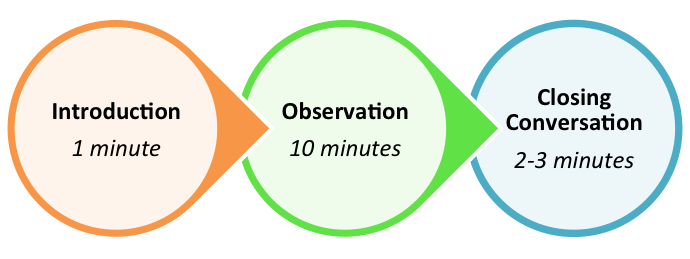
From there, the observer completes an observation form stating all of the safe activities performed, any at-risk items they observed and notes from the conversation with the employee being observed. All observations are approached with a NO-NAME NO-BLAME attitude. Only the name of the observer is listed on the observation form, along with the division of the observed employee. The name of the employee being observed is never mentioned or documented.
On a monthly basis the BEAST Steering Committee reviews all observation forms submitted to verify completeness and accuracy, discusses any at-risk items identified, tracks any trends in the at-risks category and takes the appropriate action to correct the risks. The team also measures the effectiveness of any action taken to correct at-risks and makes adjustments to the program as needed.
The Process Flow Diagram shown is a quick picture of the full program process.
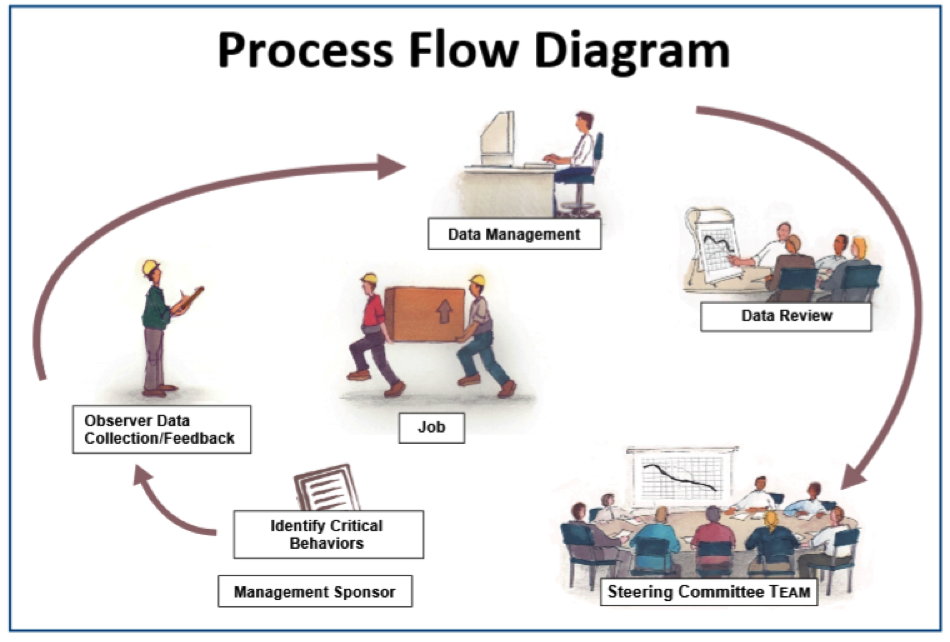
The goal of a BBS program is to identify unsafe behaviors (conscious or unconscious), not to focus blame on any individual person. When an organization knows the behaviors of their teams, they can address risks through appropriate means, often including training or additional resources/equipment/PPE, etc. It is also an opportunity to point out and reinforce positive behaviors, decisions and the importance of always taking the necessary safety precautions. This type of program supports the goal of many organizations – to send all our associates home safely to their families, friends, pets and hobbies at the end of each day.
OBSERVATION STATISTICS FOR 2016
- 547 Observations were completed. Which created opportunities for our employees to discuss safety in our day-to-day activities…keeping safety in the forefront of our minds.
- 7,772 safe actions were observed! This equates to 98% of the actions/ behaviors observed and documented were completed safely.
- 182 at-risks were observed. All of these have been tracked, documented and discussed within the BEAST Steering Committee. These discussions have led to choosing the monthly safety focus, discussing any actions needed to pursue an area further (including potential training) and follow-up actions to make sure we use data to make improvements.
At Bassett Mechanical, we are very excited about our journey so far and look forward to the future of the program. This includes more observers joining our team, a continued positive shift toward safety observations, and conversations being part of everyday expectations.
Learn more about our commitment to safety.

